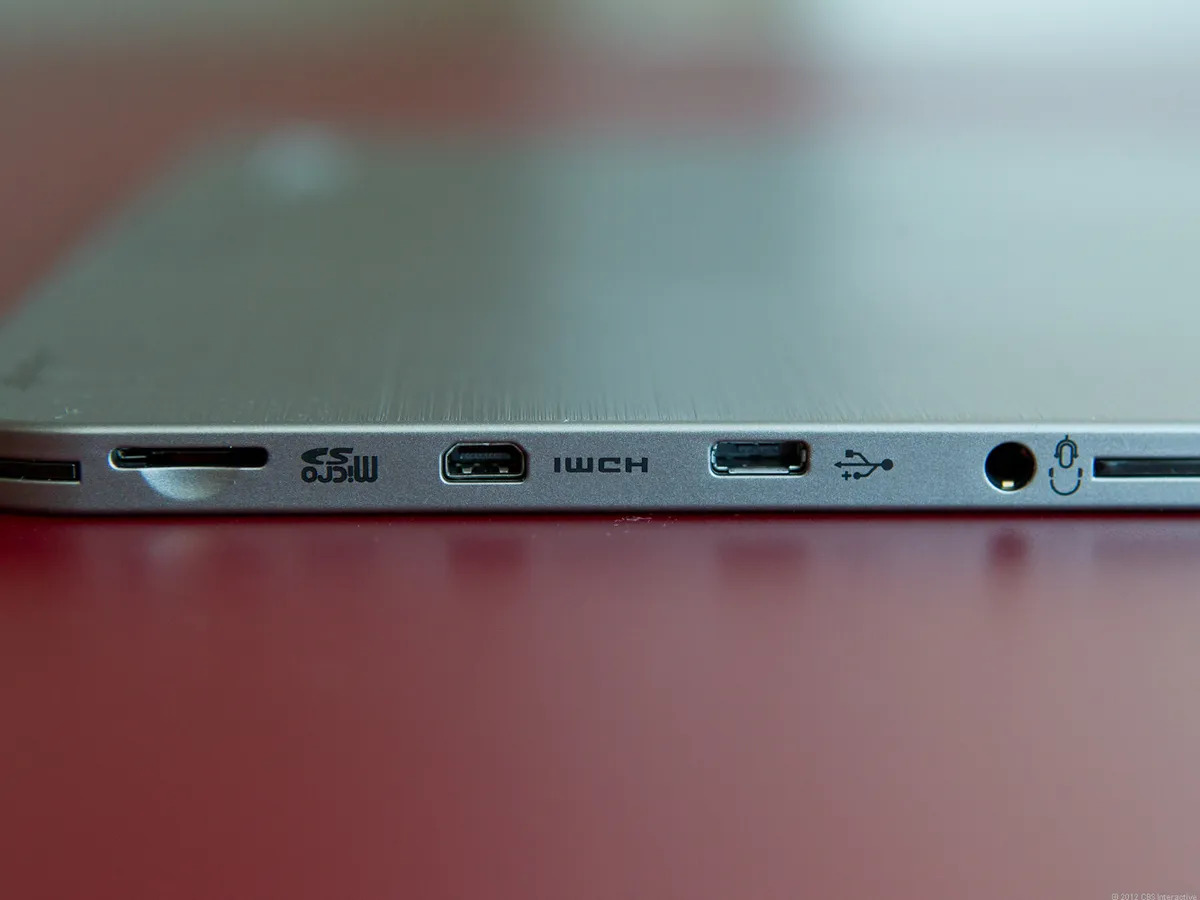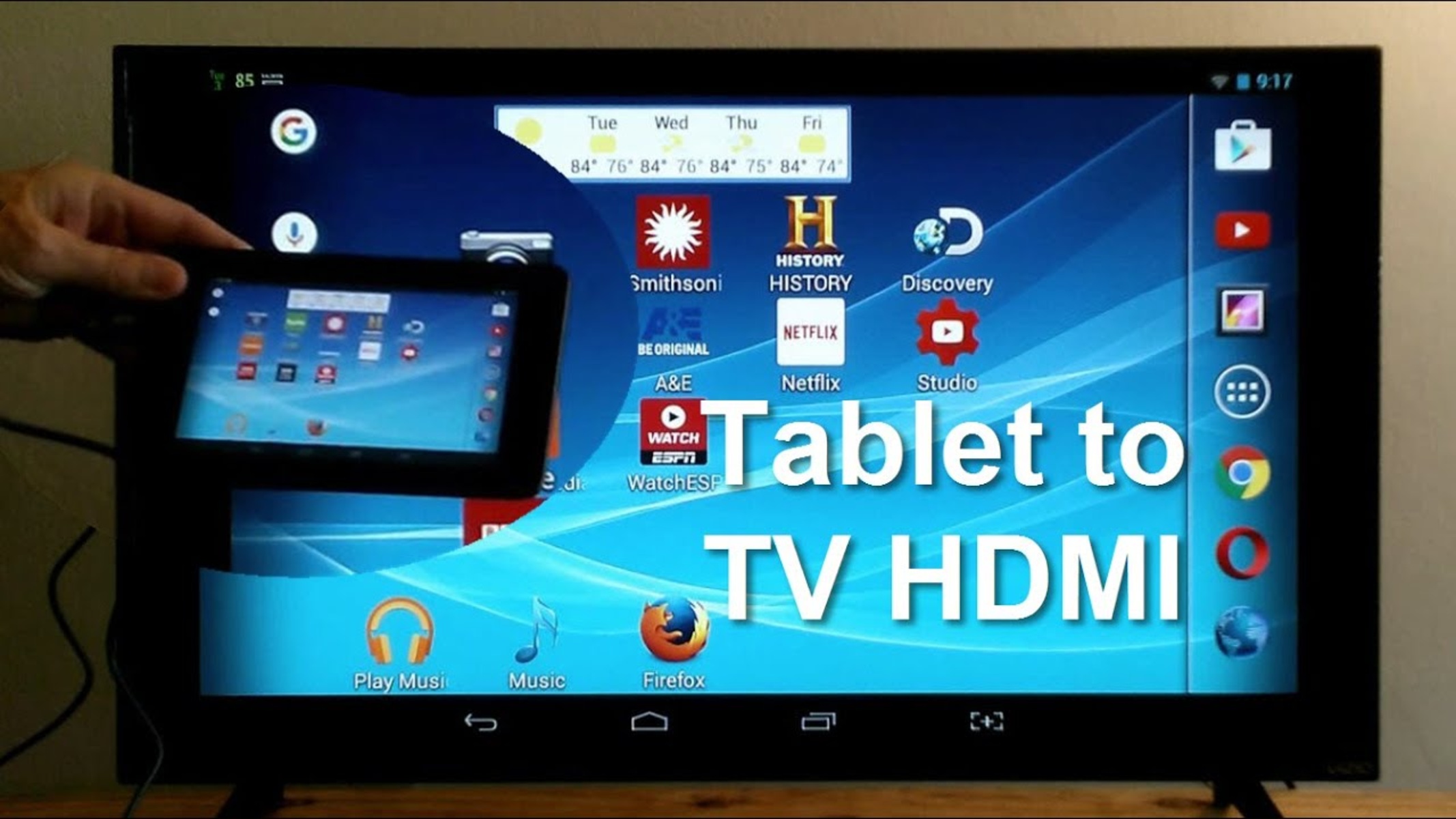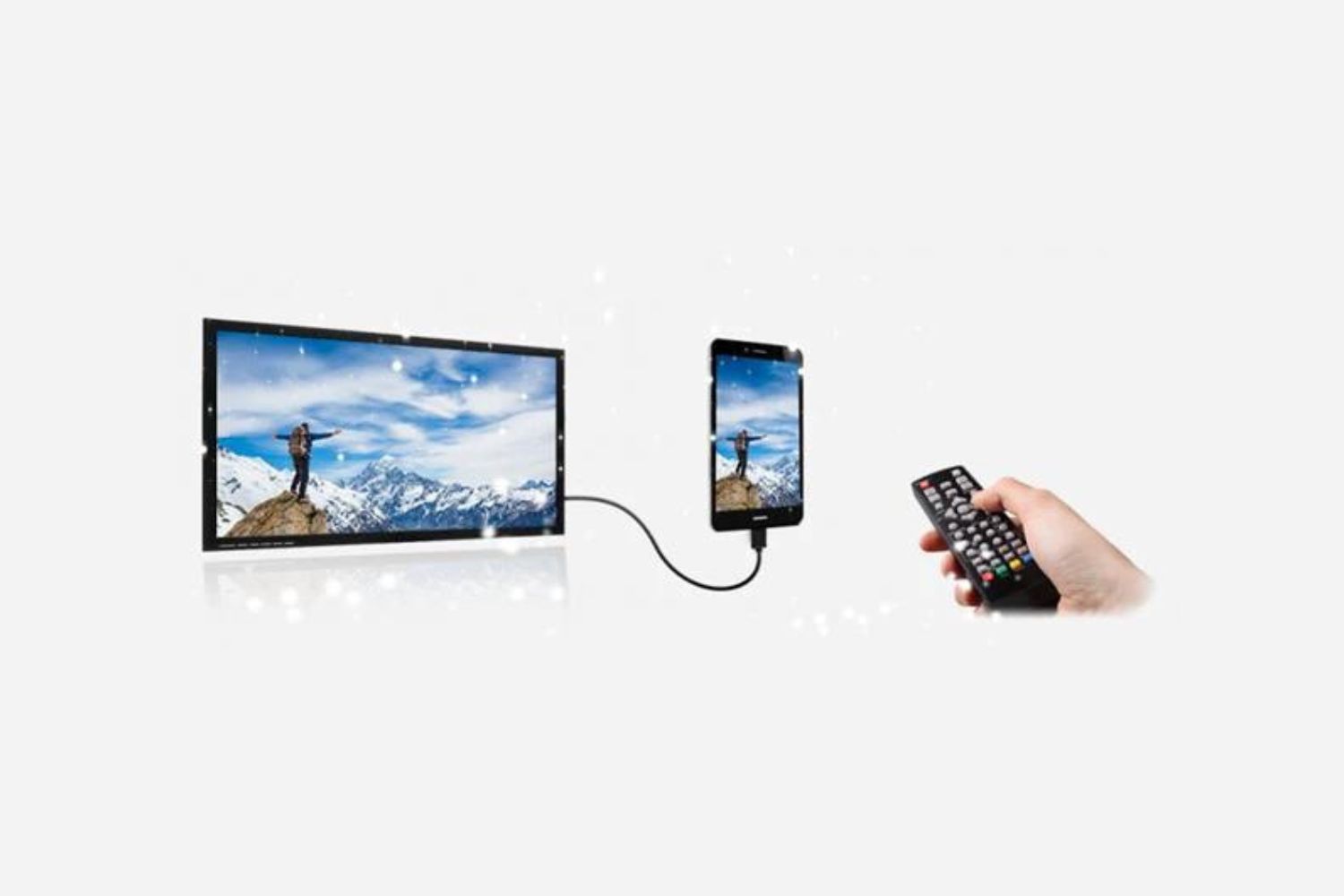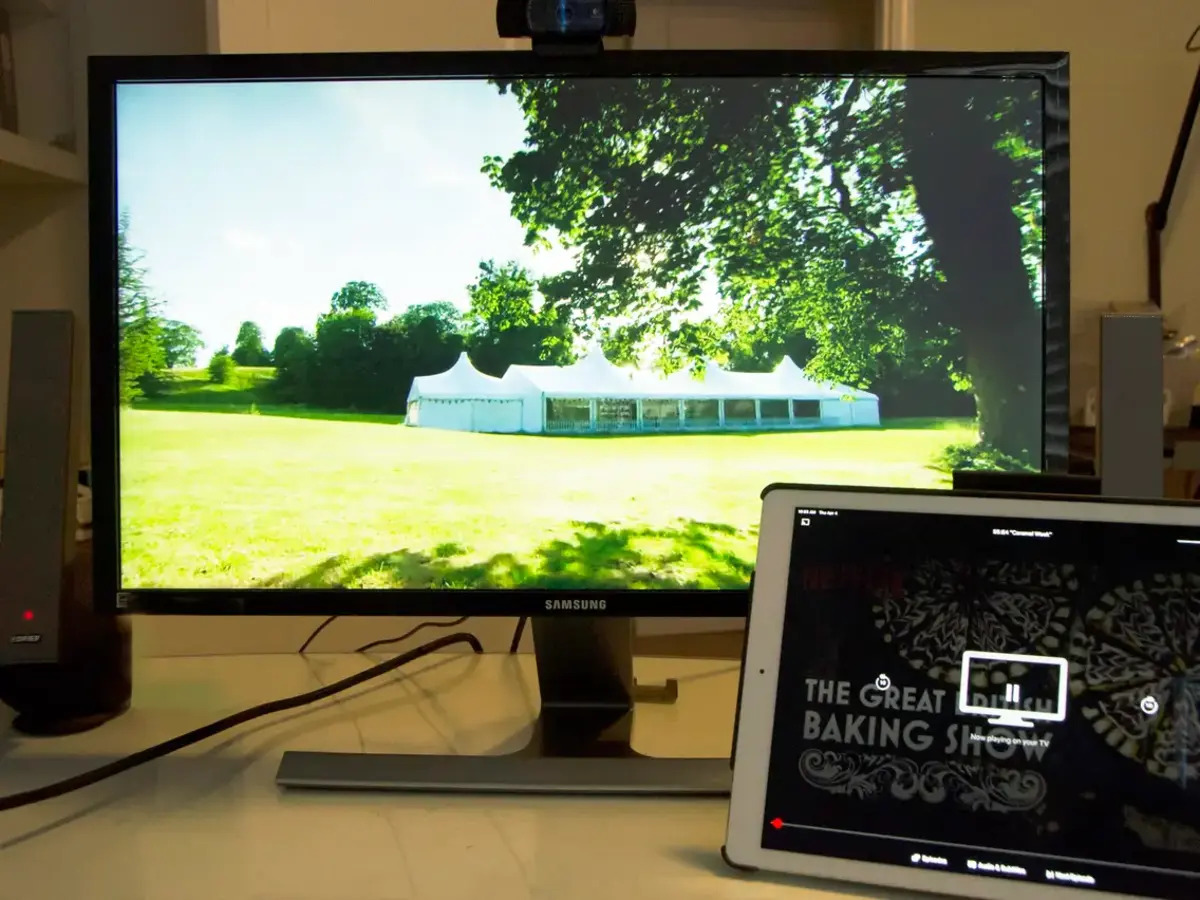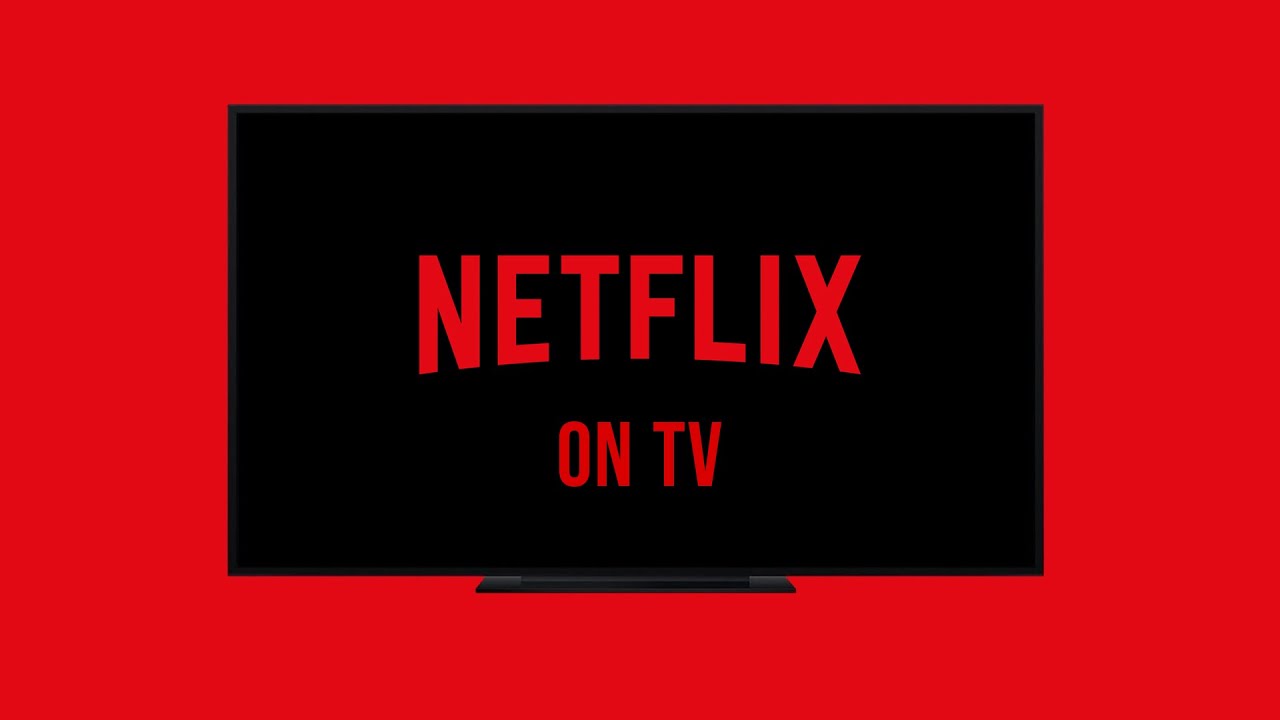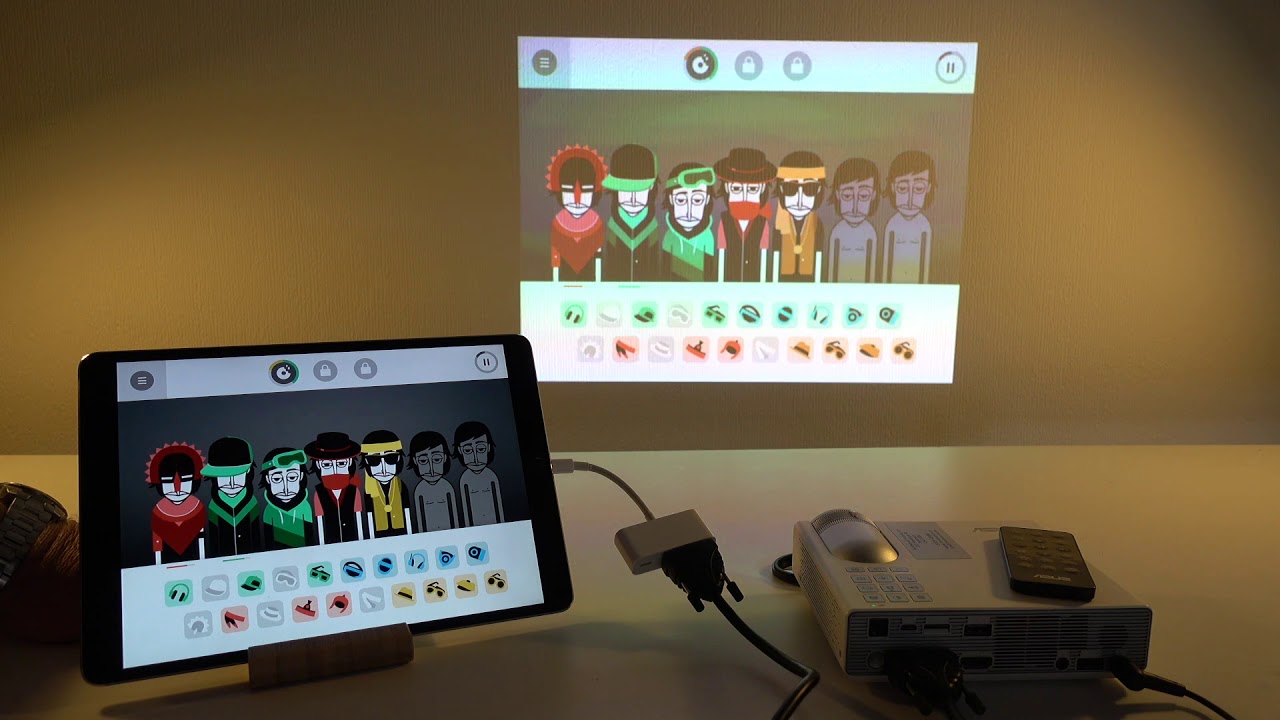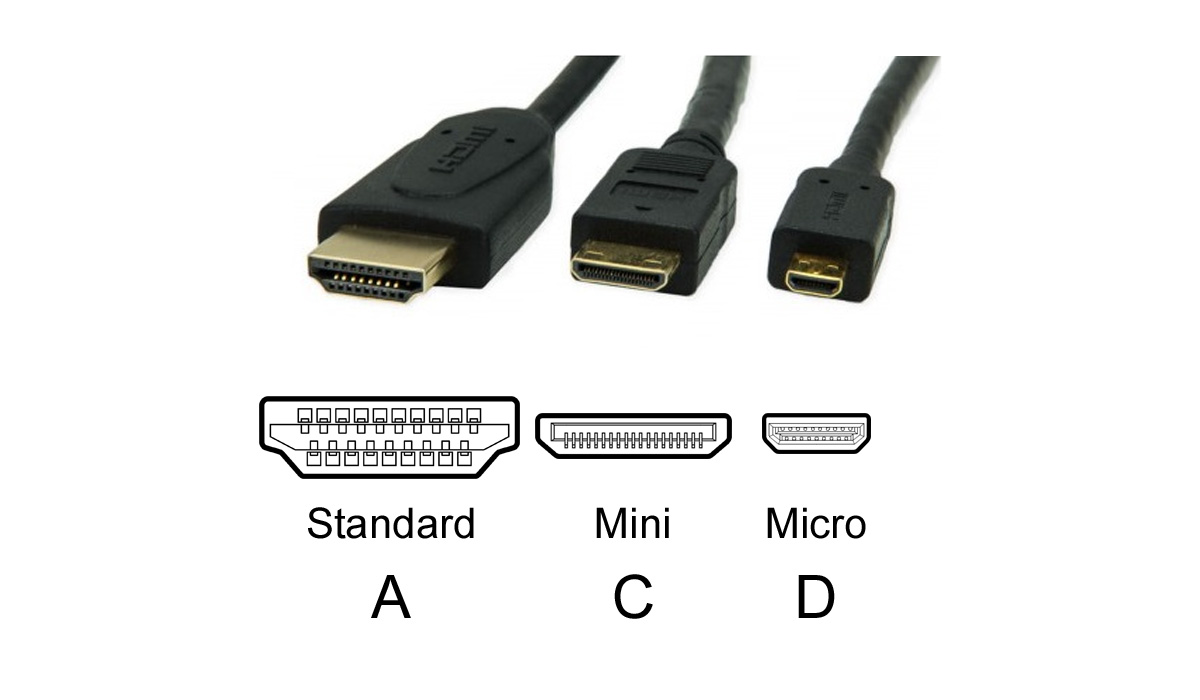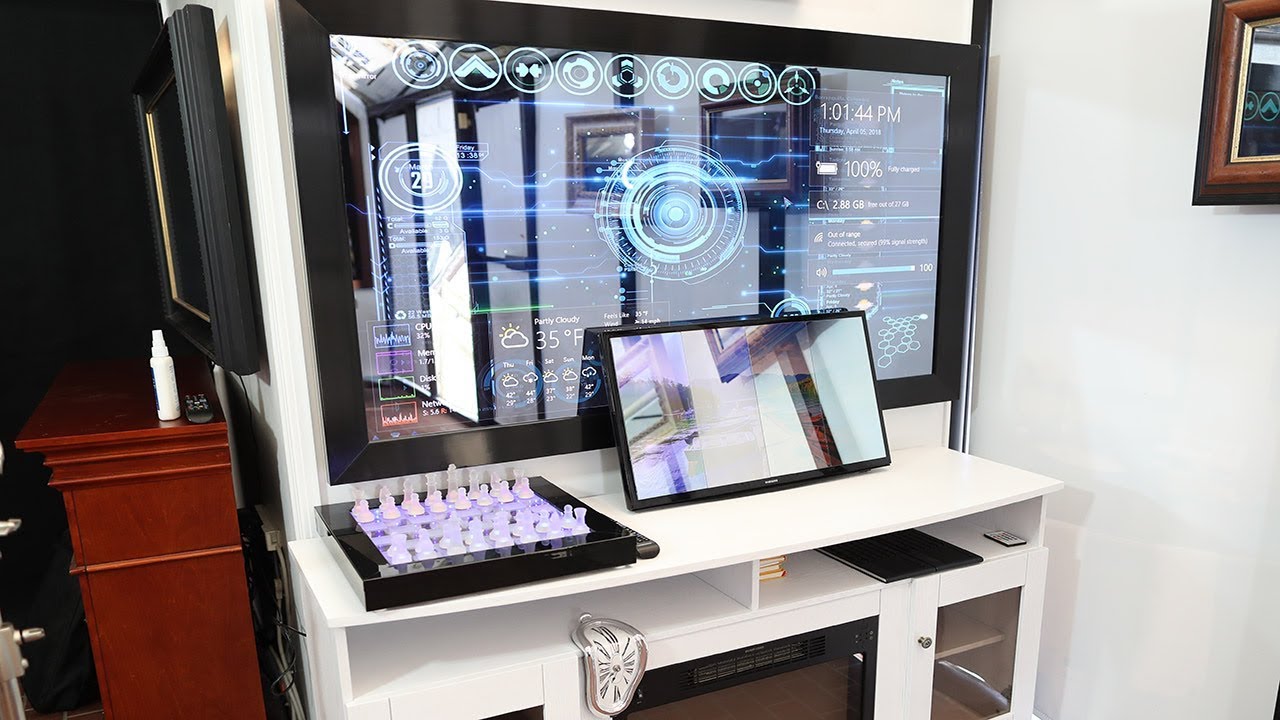Introduction
Tablets have become an integral part of our daily lives, offering a portable and versatile computing experience. While they are primarily used for browsing the web, checking emails, and consuming media, tablets are also equipped with various connectivity options to enhance their functionality. One such connectivity feature is the HDMI port, which allows tablets to be connected to external displays, such as TVs, monitors, or projectors.
So, what exactly is HDMI? HDMI stands for High-Definition Multimedia Interface, which is a digital audio/video interface commonly used to transmit high-quality audio and video signals between devices. It provides an effortless way to connect devices and enjoy high-definition content on a larger screen.
Tablets equipped with an HDMI port offer users the flexibility to extend the tablet’s display onto a larger screen or mirror the tablet’s screen onto an external monitor. This opens up a world of possibilities and expands the tablet’s functionality beyond its compact size. Whether it’s for entertainment, productivity, or presentations, the HDMI port on a tablet can significantly enhance the user experience.
In this article, we will explore the many uses of an HDMI port in a tablet and how it can benefit users in different scenarios. From increasing productivity to gaming on a big screen, and from streaming content to delivering impactful presentations, the HDMI port unlocks a new level of versatility for tablet users.
What is HDMI?
HDMI, which stands for High-Definition Multimedia Interface, is a digital audio/video interface that allows the transmission of high-quality uncompressed audio and video signals between devices. It has become the standard connection for transmitting high-definition content, providing users with a seamless and high-fidelity multimedia experience.
HDMI supports both audio and video signals, delivering crystal-clear sound and vibrant visuals. It eliminates the need for multiple cables by combining both digital audio and video into a single cable, simplifying the connection process and reducing cable clutter. HDMI cables are capable of carrying high-definition signals, including resolutions of up to 4K (Ultra HD) and even 8K in the latest versions.
The HDMI port is now a common feature in many devices, including tablets. This allows tablets to leverage the power of HDMI to connect to external displays and enjoy high-definition content on a larger screen. The HDMI port on a tablet generally follows the same standards as other HDMI devices, ensuring compatibility and seamless connectivity.
With its digital interface, HDMI provides a pure and uncompressed signal transmission, maintaining the highest possible quality from the source device to the display. This results in sharp images, vivid colors, and immersive audio, making HDMI an ideal choice for enjoying movies, gaming, and multimedia content.
Not only does HDMI support high-definition audio and video, but it also supports additional features like Ethernet connectivity (HDMI with Ethernet), which allows devices to share an internet connection through the HDMI cable. This eliminates the need for separate Ethernet cables or wireless connections, providing a convenient way to connect and access online content.
Overall, HDMI revolutionizes the way we connect and experience multimedia content. Its high-speed capabilities, combined with its ease of use and widespread adoption, have made it the go-to interface for connecting devices, including tablets, to external displays.
What is an HDMI port in a tablet?
An HDMI port in a tablet refers to the physical connector that allows the tablet to establish a direct connection with external displays, such as TVs, monitors, or projectors, using an HDMI cable. It serves as an interface through which the tablet can transmit high-definition audio and video signals in a digital format.
The HDMI port found on a tablet is typically a smaller version of the standard HDMI port found on other devices, such as laptops or gaming consoles. This smaller variant is known as a micro-HDMI or mini-HDMI port, and it allows tablets to maintain a slim and compact design without sacrificing connectivity options.
The presence of an HDMI port in a tablet expands its capabilities beyond the built-in screen, providing users with the freedom to enjoy content on a larger display. Tablets with an HDMI port can output high-definition audio and video signals directly to an external monitor or TV, allowing for a more immersive and engaging viewing experience.
Furthermore, the HDMI port in a tablet supports various HDMI standards, ensuring compatibility with a wide range of displays and devices. This means that users can connect their tablets to modern 4K TVs, HD monitors, or even projectors, and enjoy content in stunning high definition.
The HDMI port in a tablet not only supports audio and video transmission but also allows for other functionalities. For instance, tablets can transmit audio signals through the HDMI port to external speakers or sound systems, creating a surround sound experience for movies, music, or gaming.
It’s worth noting that not all tablets have an HDMI port. Some tablets may use alternative methods, such as wireless screen mirroring or streaming protocols like Chromecast, to connect to external displays. However, for those tablets that do feature an HDMI port, it presents a reliable and straightforward solution for connecting to different devices, making them highly versatile and adaptable to various scenarios.
In summary, an HDMI port in a tablet acts as a gateway to a whole new world of connectivity and multimedia possibilities. It enables tablets to connect seamlessly with external displays, offering users the opportunity to enjoy high-definition content, expand their productivity, or deliver powerful presentations with ease.
Connecting a tablet to an external display using HDMI
Connecting a tablet to an external display using HDMI is a straightforward process that allows users to extend their tablet’s screen or mirror its display onto a larger monitor or TV. This opens up numerous possibilities for entertainment, productivity, and presentations. Here’s a step-by-step guide on how to connect a tablet to an external display using HDMI:
- Check the tablet’s specifications: Before attempting to connect the tablet to an external display, ensure that the tablet has an HDMI port. Look for a micro-HDMI or mini-HDMI port, depending on the tablet’s model.
- Obtain an HDMI cable: Purchase an HDMI cable that matches the tablet’s HDMI port type. For instance, if the tablet has a micro-HDMI port, get a micro-HDMI to HDMI cable.
- Connect the HDMI cable: Plug one end of the HDMI cable into the tablet’s HDMI port and the other end into the HDMI port of the external display device, such as a TV or monitor.
- Select the HDMI input: On the external display device, switch to the HDMI input that corresponds to the HDMI port to which the tablet is connected. This is usually done using the input/source button on the TV or monitor remote.
- Adjust tablet settings: On the tablet, go to the settings menu and find the display or HDMI settings. This may vary depending on the tablet’s operating system. Choose the appropriate display option, such as “Mirror Display” to duplicate the tablet’s screen or “Extend Display” to use the external display as an additional monitor.
- Enjoy the extended display: Once the settings are adjusted, the tablet’s screen should be visible on the external display. Users can now navigate their tablet and enjoy the content, which will be mirrored on the larger screen.
It’s important to note that some tablets may require additional settings or third-party apps to enable HDMI output. These settings and apps may vary depending on the tablet’s brand and operating system. It’s advisable to consult the tablet’s user manual or visit the manufacturer’s website for specific instructions.
Connecting a tablet to an external display using HDMI is an excellent way to enhance the tablet experience. It allows users to enjoy movies, games, and multimedia content on a bigger and more immersive screen. Additionally, it expands productivity by providing a larger workspace for multitasking or extending presentations to larger audiences.
Overall, connecting a tablet to an external display using HDMI is a simple and effective way to take full advantage of the tablet’s capabilities and enjoy a more immersive and versatile viewing experience.
Increase productivity with a larger screen
One of the significant advantages of connecting a tablet to an external display using HDMI is the potential increase in productivity. The larger screen real estate offers several benefits for various tasks, making it a valuable asset for work, studying, or personal projects.
With a larger screen, users can have more windows open simultaneously, enabling efficient multitasking. This is particularly useful when working with documents, spreadsheets, or even editing photos or videos. Having multiple applications or documents side-by-side on the extended display allows for better organization and easier comparison between different files or pieces of content.
Furthermore, a larger screen offers a more comfortable and immersive reading experience. Whether it’s reading e-books, digital articles, or online research, the increased size of the display reduces eye strain and makes it easier to consume and comprehend text. This is particularly beneficial for students or professionals who require extended periods of reading and research.
For creative professionals such as graphic designers, artists, or video editors, a larger screen can significantly enhance their workflow. It provides a more spacious canvas to work on, allowing for precise detail work and better overall visualization of the project. This level of precision and clarity can greatly improve the quality of the final output.
Connecting a tablet to an external display using HDMI also enhances collaboration and team productivity. In a work or classroom setting, individuals can showcase their work, ideas, or presentations on a larger screen for a more impactful and immersive experience. This boosts engagement and encourages active participation from the audience, resulting in more productive discussions and interactions.
Furthermore, extended displays can be leveraged in remote work scenarios. By connecting a tablet to a larger external display, users have the flexibility to create a dedicated workspace wherever they go. This is particularly useful for professionals who travel frequently or work remotely but require a larger screen for optimal productivity. The ability to connect a tablet to an external display allows for a seamless transition to a workstation-like setup and eliminates the need to carry a bulky laptop.
In essence, connecting a tablet to an external display using HDMI significantly enhances productivity across various tasks and professions. The larger screen real estate offers more flexibility, better organization, improved collaboration, and a more immersive experience. Whether it’s for work, studying, or personal projects, utilizing a larger screen can truly transform the way tasks are accomplished and lead to increased efficiency and productivity.
Gaming on the big screen
One of the most exciting benefits of connecting a tablet to an external display using HDMI is the ability to enjoy gaming on a larger screen. Gaming on a big screen offers a more immersive and engaging experience, allowing gamers to fully appreciate the stunning visuals and intricate details of their favorite games.
With the tablet connected to an external display, gamers can enjoy a more expansive field of view, providing a broader perspective of the game world. This not only enhances the overall gameplay experience but also allows for better situational awareness and strategic decision-making in multiplayer games or fast-paced action titles.
The increased screen size of the external display also contributes to better visual fidelity. Games can be enjoyed in high-definition, allowing players to appreciate the stunning graphics, vibrant colors, and intricate details in a way that may not be possible on a smaller tablet screen. This heightened visual experience adds to the immersion and enjoyment of the gaming session.
Furthermore, gaming on a larger screen creates a more social experience. Players can connect their tablet to a TV or monitor and invite friends or family members to join in on the fun. This is particularly enjoyable for multiplayer games, as everyone can have a clear and comfortable view of the gameplay, enhancing the competitiveness and camaraderie among players.
Another advantage of gaming on a big screen is the option to use external controllers or peripherals. By connecting a tablet to an external display, users have the freedom to connect game controllers, keyboards, or mice to enhance the gaming experience. This opens up a whole new range of gameplay possibilities and control options, providing a more immersive and customizable experience.
Additionally, gaming on an external display using HDMI allows for seamless streaming and casting options. Users can stream games from their tablets to the larger screen, creating a console-like gaming experience. This is particularly useful for cloud gaming services or game streaming platforms, which allow users to play high-quality games on their tablets and broadcast the gameplay to a big screen for enhanced enjoyment.
Overall, gaming on a big screen by connecting a tablet to an external display using HDMI offers a more immersive, visually stunning, and social gaming experience. Whether it’s exploring vast game worlds, competing with friends, or enjoying the detailed graphics of the latest titles, connecting a tablet to an external display takes gaming to the next level and provides hours of entertainment and enjoyment for avid gamers.
Streaming content to a TV or projector
One of the significant advantages of connecting a tablet to an external display using HDMI is the ability to stream content to a TV or projector. This opens up a world of entertainment possibilities, allowing users to enjoy their favorite movies, TV shows, videos, or even online streaming services on a larger screen.
By connecting a tablet to a TV or projector via HDMI, users can easily stream content from various sources directly to the external display. This includes popular streaming platforms, such as Netflix, Hulu, Amazon Prime Video, or YouTube, as well as personal media libraries stored on the tablet.
The larger screen of a TV or projector enhances the viewing experience, providing a cinematic feel and allowing users to fully immerse themselves in their favorite shows or movies. The increased size and visual clarity of the external display bring out the details, colors, and visual effects in a way that a smaller tablet screen may not be able to replicate.
Furthermore, streaming content to a TV or projector using a tablet and HDMI connection enables users to enjoy content together with family and friends. Whether it’s hosting a movie night, watching sports events, or sharing vacation videos, the larger screen creates a more social and enjoyable experience for everyone present.
Additionally, connecting a tablet to an external display allows for additional features and control options. Many streaming apps have remote control functionality, allowing users to navigate and control playback from their tablets while streaming content on the larger screen. This adds convenience and eliminates the need for separate remote controls or devices.
Moreover, streaming content to a TV or projector using a tablet offers flexibility in terms of screen placement. Users can position the TV or projector in a more optimal location for viewing, ensuring a comfortable viewing experience for all viewers. This freedom to choose the ideal viewing setup contributes to the overall enjoyment of the content being streamed.
It’s also worth mentioning that in addition to streaming entertainment content, connecting a tablet to an external display using HDMI opens up opportunities for educational or instructional purposes. Teachers or presenters can connect their tablets to a projector and deliver engaging presentations, showcase multimedia content, or enhance learning experiences with interactive applications.
In summary, connecting a tablet to a TV or projector via HDMI allows users to stream a wide range of content and enjoy it on a larger screen. Whether it’s enjoying movies, TV shows, videos, or educational presentations, the availability of a bigger display enhances the viewing experience, creates a social atmosphere, and offers more control options for an enjoyable and immersive streaming experience.
Presentations and business meetings
Connecting a tablet to an external display using HDMI offers significant advantages for presentations and business meetings. Tablets provide a convenient and portable platform for creating and delivering presentations, and connecting them to an external display enhances the impact and effectiveness of these presentations.
With the tablet connected to a larger screen, presenters can showcase their slides, documents, or multimedia content to a larger audience, ensuring that everyone can see and follow along without straining their eyes. The increased screen size brings out the details and visuals in a way that may not be fully appreciated on a smaller tablet screen, making presentations more engaging and impactful.
Furthermore, tablets offer the convenience of touch-based interfaces, allowing presenters to interact with their presentations directly on the tablet. With the tablet connected to an external display, presenters can navigate through slides, annotate content, or even draw diagrams in real-time, which can greatly enhance the audience’s understanding and engagement with the material being presented.
Connecting a tablet to an external display also enables presenters to leverage additional features and applications. For example, tablets often include screen mirroring capabilities, allowing presenters to share their entire tablet screen, including live demonstrations, app interfaces, or other content, on the larger display. This level of interactivity and real-time sharing can make presentations more dynamic and memorable.
In addition to presentations, tablets connected to external displays are also useful for business meetings. With the tablet acting as a central hub, it becomes easy to display and share data, charts, reports, or collaborative documents with meeting attendees. This eliminates the need for printing numerous copies of documents and fosters a more environmentally friendly and efficient approach to sharing information.
Tablets can seamlessly integrate with video conferencing or collaboration tools, allowing remote participants to be connected and engaged in real-time. By connecting a tablet to an external display, those attending the meeting remotely can see and interact with the shared content, ensuring a more inclusive and effective collaboration experience.
Additionally, tablets equipped with HDMI connectivity can be used in conjunction with other meeting room equipment, such as projectors or interactive whiteboards, enhancing the overall meeting experience and fostering collaboration and idea exchange among team members.
In summary, connecting a tablet to an external display using HDMI significantly enhances presentations and business meetings. The larger screen size, interactive features, and the ability to share content seamlessly make tablets an invaluable tool for delivering impactful presentations, sharing information, and fostering collaboration in both small and large group settings.
Mirror or extend your tablet’s display
One of the key features of connecting a tablet to an external display using HDMI is the ability to mirror or extend the tablet’s display onto the larger screen. This functionality offers users flexibility in how they utilize the additional screen real estate and enhances the overall versatility of the tablet.
Mirroring the tablet’s display onto the external screen creates an exact replica of what is shown on the tablet. Every action, app, or content displayed on the tablet is simultaneously displayed on the larger screen. This is particularly useful for presentations, demonstrations, or sharing content with a larger audience. It allows viewers to see exactly what the presenter or user is seeing on their tablet, ensuring clarity and synchronization of information.
Another option is to extend the tablet’s display onto the larger screen. In this mode, the tablet acts as the primary display, while the external screen becomes an additional workspace. This extended display feature is especially beneficial for multitasking, as it allows users to have multiple windows or apps open simultaneously. Users can easily drag and drop content between the tablet’s display and the extended display, creating a seamless and efficient workflow.
Extending the tablet’s display is particularly useful for professionals who require a larger workspace for tasks such as video editing, graphic design, or data analysis. The extended screen provides more room for editing timelines, visualizing complex data, or arranging multiple application windows for increased productivity.
Moreover, selecting the mirroring or extended display mode can be adjusted easily in the tablet’s settings. Most tablets offer intuitive and user-friendly options to switch between these modes, allowing users to adapt to different scenarios quickly. This flexibility ensures that the tablet can adapt to various usage scenarios, whether it’s for personal entertainment, work, or presentations.
Additionally, some tablets support touch input on the external display when in extended display mode. This means that users can directly interact with the extended display using touch gestures, just like on the tablet’s screen. This feature is advantageous in scenarios where the external display is touch-enabled or when using interactive applications or drawing programs that benefit from direct touch input.
In summary, connecting a tablet to an external display using HDMI provides the option to mirror or extend the tablet’s display, adding to its versatility and functionality. Whether mirroring for presentations or demonstrations, or extending for multitasking and productivity, the ability to utilize the larger screen real estate enhances the user experience and opens up new possibilities for tablet users.
Conclusion
The HDMI port in a tablet offers a multitude of possibilities and enhances the overall functionality and user experience. By connecting a tablet to an external display using HDMI, users can enjoy a range of benefits, from increased productivity to immersive gaming experiences and seamless content streaming.
The ability to connect a tablet to an external display allows for extended screen real estate, providing users with a larger workspace for multitasking, reading, or creative endeavors. It opens up opportunities for collaboration, sharing, and presenting content in a more impactful and engaging manner.
In terms of entertainment, connecting a tablet to an external display using HDMI brings a new level of immersion to gaming. Gamers can appreciate stunning visuals on a larger screen, while streaming content to a TV or projector provides a cinematic experience for movies, TV shows, or online streaming platforms.
For professionals, the HDMI port enables seamless presentations and business meetings, offering an effective way to showcase content and engage audiences. It allows for real-time collaboration and the sharing of data, charts, or reports, enhancing productivity and communication among team members.
Whether users choose to mirror their tablet’s display or extend it onto an external screen, the HDMI port unlocks new opportunities to utilize the tablet’s capabilities and adapt to different tasks and scenarios. It provides flexibility, convenience, and enhanced control options, making the tablet a versatile tool for work, entertainment, and personal use.
In conclusion, the HDMI port in a tablet serves as a bridge to a broader world of connectivity and possibilities. It enables users to connect their tablets to external displays, adding value and expanding the functionality of the tablet. Whether it’s for productivity, entertainment, or presentations, the HDMI port ensures a seamless and enhanced user experience with increased visual appeal and a greater sense of immersion.







